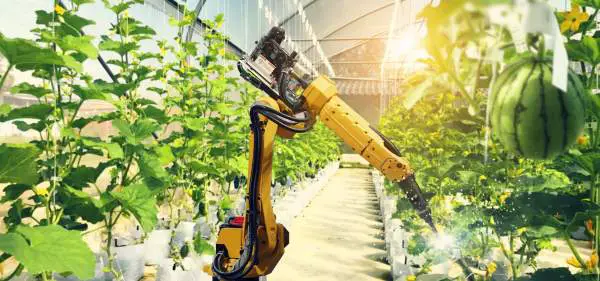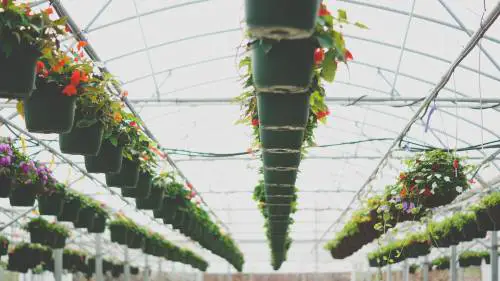With many countries looking to solve food shortages, hydroponics has been seen as another way to maximize crop output without using more arable land, which is diminishing each year.
The main staple crops in many countries are wheat, oats, barley, rice, and others. This leads to the question, “Can cereals be grown hydroponically?”
The answer to this isn’t as clear-cut as yes or no. With a carefully built hydroponic system, almost any crop can be grown, yet there are some plants, which by their very nature are not designed to grow in hydroponic systems and others that take more effort than the gain from their yields.
Here we will look to see if this question has an answer one way or the other.
What Can You Grow in Hydroponic Systems?
Many growers have systems inside their homes and make use of growing lights. However, there are also gardeners that are lucky enough to have enough space and can utilize a greenhouse to be the home to their system.
This means they can make use of the sun during the day, and then use grow light as an artificial supplement to the natural light.
Greenhouses can offer a gardener more room, yet these can quickly be outgrown with the wrong crops. When you use a greenhouse, you can see larger yields and it is these, which cause the issues.
Some crops, which are ideal for hydroponic growing, are:
Tomatoes: These thrive if grown in a hydroponic system. Depending on the variety, they will need support for their vines. This is the same if you were growing cucumbers, peas, and beans.
Strawberries: These are another great crop to grow in hydroponic systems; however, they can be hard for new growers. There are many varieties, some vine while others are bush growers.
Herbs: Many herbs can be grown and take up very little space.
Leafy greens: Lettuce, kale and many other crops are ideal for growing in a system. These shallow rooting plants thrive in these growing conditions, and it is these, which began the hydroponic boom.
Many other vegetables are suitable for hydroponic growing. These can grow throughout the year, so the chances of fresh food all the time is a distinct possibility. Many smaller plants will grow faster than larger ones and take up fewer resources and effort.
What Not to Grow in Hydroponic Systems
Even though there are many plants, which are shallow-rooted and perfect for hydroponics, there are as many, which are not suitable. These can be for differing reasons.
The first category of plants is those that don’t grow very well in a hydroponic system. Potatoes, yams, sweet potatoes, onions, garlic, carrots, and turnips will all thrive better in soil-grown conditions than in a hydroponic system.
Even if you are a gardener who has a greenhouse, there are still crops that can outgrow these spaces. Squash, melons, and many other crops that grow across the ground are not suitable because of the space they take up. These can be grown in hydroponics, yet you will need plenty of space, and then the crops grown per square foot ratio will plummet.
There are a few vining plants that are not suitable for home growers. Depending on the variety, tomatoes and cucumbers can fall into these groups. With trellising and the amount of space needed, they can overwhelm gardeners growing space.
Adding to this, these large vining plants can drain systems of nutrients, and finally, there will be a continual need for grow lights to be adjusted as the plants grow along with their vines. The extra work required can make these plants more effort than the gains that can be achieved.
Plants Which Don’t Make Economic Sense
There are many crops, which don’t make economic sense to farmers and their hydroponic system. Cereals fall into this category although there is a way where growing some cereals can make sense. This we will see later.
If you take wheat as an example, this is one of the most widely consumed cereals around the world. While not being genetically suited to hydroponic growth, there is the factor of the amount of electricity required to grow it.
To grow enough wheat to make a loaf of bread can cost upward of $20 if it was in a warehouse setting. Add to this the amount of space that is needed to grow enough wheat germ to make this loaf. There is no real feasibility for doing so.
Hydroponics is about saving space while growing more. In contradiction, wheat would take more space to grow a sufficient amount of crop, which is of any use.
To break this down into a scale that is easier to relate to for a small garden, if you were to have nine square feet of growing area, this would produce around 4 cups of wheat for every harvest. This equates to making a loaf of bread every five months or so.
While this may write off the chances of growing cereals using hydroponic methods, there are ways where hydroponics can be used for cereal production.
Cereals and Hydroponic Water Purification
The American Journal of Agricultural and Biological Science carried out a study back in 2008. While this wasn’t solely about growing wheat, barley, or oats hydroponically, it was about using aquaculture wastewater.
This is dependent on the size of your garden and will be geared more to commercial ventures. Taking the wastewater from system flushing can be used for irrigation of these cereal crops. The study showed the seeds were germinated in a hydroponic system where they then received the wastewater from the aquaculture system.
The resulting crops grew faster and didn’t show any sign of mineral deficiency. They did lack any significant amounts of protein, and even for fish food, they would need a supplement to correct this.
Although this isn’t essential growing cereals in a hydroponic system, it does show they are not averse to absorbing hydroponic nutrients, so the possibility is there are other factors that are ideal.
Hydroponic Cereal Sprouts and Microgreens
Sprouts and microgreens are taking the world by storm. These are highly nutritious and tasty. One of the ones which are touted as being a wonder food is “Wheatgrass.”
This is the first few inches of wheat as it begins its growth. Growing wheat or other cereals to maturity may not be cost-effective, yet when you grow them to this stage only, they make a lot of economic sense.
You may see wheatgrass around in juice bars or health food stores. It comes with lots of possible health benefits and can be harvested in around 7-10 days.
Any cereal which is grown in this way will be packed full of nutrients and antioxidants. These can be used to help fight inflammation, diabetes, and many other ailments.
Most of these can be grown with a weakened nutrient solution in coco coir while stacked on shelves with a grow light above them. They may take minimal watering, yet they still need all the same elements as the rest of a hydroponic garden such as temperature, ventilation, and light.
A grower who ventures down this road may be surprised by how much demand there is for this kind of small crop. Microgreens are in high demand from restaurants to the health-conscious, even if the garden isn’t a commercial venture, it can lead that way, or just deliver many healthy things to spice up the dinner table.
Conclusion
Asking the question of whether or not cereals can be grown hydroponically does leave plenty open to debate. The reasons for not growing wheat are more down to the sense of doing so rather than it can’t be grown to a mature plant hydroponically.
Once you look at sprouts and microgreens, nearly all cereals can be sprouted or grown to a certain age that makes the minimal effort of doing this well worth it for every grower. This way, you can grow more crops in a smaller space and faster than plants reaching maturity.
A defining answer for growing cereals would be yes, but just not in the ways, you expect plants to grow. As you can see above, at the current time, there are many other crops that can be grown in hydroponic systems, yet the ways systems are set up, they are not a viable crop to do so.
Be it for growing constraints or the economic side rules them out, it doesn’t mean they can’t be grown using these methods.





